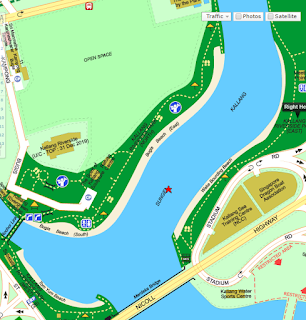Setting Boundaries
The last strategy involves identifying and setting clear
boundaries for important thresholds in socio-ecological systems (SES). Many
SESs can exist in several “self organising states” (Biggs, et al., 2015) that shift from one
to another when critical thresholds are passed that collapse the structure
behind the system. Such drastic shifts could have substantial impacts for both
society and the environment. Robustness plays a role here. How robust a SES is
ultimately affects the degree which its structure can endure shocks to its
systems (Carlson & Doyle, 2002) .
The difficulty lies in identifying the critical point where
a regime shift occurs. Biggs, et al (2015) describe the underlying variables
behind such drastic shifts as “almost always unknown, varying between systems
and change over time”. Thus creating the problem of ontological complexity
which adds uncertainty to one’s understanding of when regime shifts might
occur.
Yet, we can estimate such critical thresholds by
extrapolating them from observations of similar regime shifts in similar SES.
To even further reduce this uncertainty, it is also possible to add an
additional boundary from the threshold point to reduce the likelihood of
hitting that boundary. The length on the additional boundary from the threshold
point can be varied depending on the unique factors tied to the SES and
adjusted accordingly if circumstances change.
I couldn’t find specific examples of boundaries used in the
governance of SES in Singapore but I would imagine they are there based on what
I have read thus far. For example, I came across this presentation[1]
made by the Public Utilities Board (PUB) that made mention of a 42 month study
to establish a baseline for ecosystem biodiversity in all reservoirs. The study
took random samples across both disturbed and undisturbed zones of reservoirs
by using traps and nets to capture species in the area. By doing so, the
researchers hoped to identify the current biodiversity levels in the reservoirs
and seek to maintain them.
I thought this was a really good indication of a threshold
as it showed that the authorities were looking into the normal levels of
biodiversity in the reservoir. By constantly monitoring this marker,
authorities can act when the biodiversity levels fall below the norm to prevent
drastic regime shifts.
Another interesting aspect of the study was that of alien
species; those non-native to the reservoirs. It found that Bedok Reservoir had
a significant “alien” presence which whilst strengthening its biodiversity also
could cause a shift in the structure holding the reservoir together. Thus, I
feel that a single marker isn’t enough in the employment of boundaries.
Instead, a variety of markers need to be used to ensure sufficient coverage of
the issues facing the SES.
Another place where boundaries could be heavily used is that
of water quality in the reservoirs. With 2/3 of Singapore being water catchment
areas, it is imperative that the water quality of these areas be monitored to
ensure they are safe for human consumption. The PUB constantly monitors the water
quality of the reservoirs according to legislation and these standards are
released to the public (Public Utilities Board, 2016) . There is a range
given in the water quality which seems to be the boundary we discussed earlier.
Thus there clearly are boundaries set in place to ensure the quality of the
water.
[1] https://www.cbd.int/doc/meetings/nbsap/nbsapcbw-seasi-01/other/nbsapcbw-seasi-01-sg-water-en.pdf




















